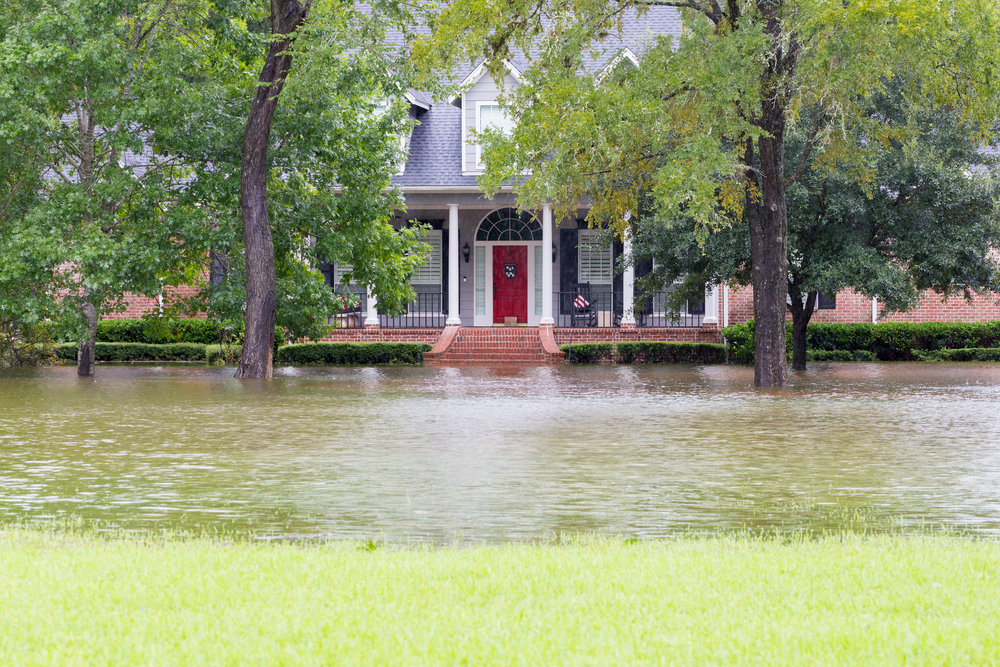
Flood Insurance 101: What You Need To Know
Flood insurance is an important protection for your home that deserves attention. After all, water can be one of the most destructive forces to the long-term integrity of your home as well as your personal possessions.
Just one inch of floodwater can cause up to $25,000 in damages to a home. Therefore, it’s important to protect your most valuable possession, your home, with flood insurance. Unfortunately, many homeowners are unaware that they need separate flood insurance and incorrectly assume they are covered under their standard homeowner’s policy. This places them at great risk for loss should a flood occur.
How Does Flood Insurance Work With Your Homeowner’s Policy?
Homeowners’ insurance in most cases does not include flood coverage. Flood insurance is a separate policy that you purchase to cover your home, the contents of your home, or both. It is vitally important coverage when it comes to protecting what is the largest financial investment for most people, their home.
Is Flood Insurance Necessary?
Homes and businesses located in high-risk flood areas with government-backed mortgages are legally required to maintain flood insurance. However, even if you do not live in a high-risk area, flood insurance can be a wise investment and some lenders make it a necessary part of your loan agreement.
What Are The Main Benefits of Flood Insurance?
A flood is defined on a flood policy as a general and temporary condition of partial or complete inundation of two or more acres of normally dry land or of two or more properties. Therefore, the water must cover two acres or two properties, one of which is yours. Although the amount you pay will differ based on your flood risk area, you can expect to spend at least $1000 annually for coverage. When you consider the fact that even a small amount of water, a mere inch can cause upwards of $25,000 in damage, it is easy to see that flood protection is a worthwhile investment for most homeowners. Flood coverage includes protection for your home and personal property (if you choose to cover your personal property), however, flood policies do not cover finished basements. A flood policy will only cover things in a basement such as a furnace, hot water heater, freezer and possibly a washer and dryer.
You Already Have Flood Insurance, and Need to File a Claim, What’s Your Next Step?
If you already have flood coverage and want to file a claim, consider the following steps:
- Take pictures: Take pictures of any and all damage you see before filing a claim. This is the first step in proving your home has been damaged as a direct result of a flood. Ensure you have taken photographs of everything before moving on to step two.
- Clean and dry the area: To the best of your ability and to prevent further damage from occurring, it’s a good idea to clean and dry the flooded area. Mold can quickly grow in a wet or even damp environment, which can exacerbate the problem, so quick attention and clean-up is a good idea when possible. (Hold off on actual repairs until after step four).
- Assess the damage: Try to take note of the damage you see. This can either be with a pen and paper or you can make yourself notes on your phone. The idea is simply to begin to quantify the damage that has been done so that restoration can begin.
- Call your insurance provider: It’s important that you contact your insurance provider as soon as possible after flooding has occurred. Your insurance provider will walk you through the entire claims process and share what additional steps you need to take to begin the process of restoration. In some cases, you might even be placed in another living arrangement while flood damage is being repaired in your home. Make sure you keep up with the receipts for any and all expenditures related to the flooding event during this time.
Bottom Line: Flood Insurance is a Wise Investment
Getting the right insurance to properly protect your home from flood damage is as important as knowing what to do right after flood damage, for the claim filing process. We’re here to help with both, so contact our team today, and we would be happy to stand alongside you.
Learn more about Winter-Dent Individual Insurance.


